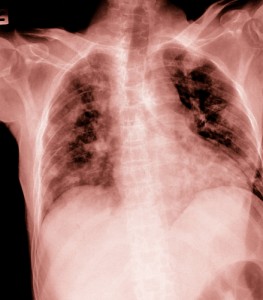PRM-151 Anti-Fibrosis Drug Granted FDA Fast Track Status for Myelofibrosis
Written by |

 Promedior, Inc. recently announced in a press release that they have received FDA fast track designation for their compound – PRM-151 – as a promising, new therapeutic for patients with myelofibrosis. The new designation supports continuing evidence that PRM-151 may be a viable therapy for treating a range of diseases characterized by fibrosis.
Promedior, Inc. recently announced in a press release that they have received FDA fast track designation for their compound – PRM-151 – as a promising, new therapeutic for patients with myelofibrosis. The new designation supports continuing evidence that PRM-151 may be a viable therapy for treating a range of diseases characterized by fibrosis.
Myelofibrosis is a rare type of chronic leukemia and is characterized by extensive scarring in bone marrow leading to symptoms, such as anemia. While some patients remain free of symptoms, others will ultimately progress to other more serious forms of leukemia. In the U.S., approximately 18,000 people are diagnosed with myelofibrosis each year. The only effective current treatment relies on an allogeneic bone marrow transplant, however, it is a therapeutic option for only a very narrow group of patients.
PRM-151 is a recombinant form of an endogenous human protein, Pentraxin-2 (PTX-2), and is capable of inhibiting and even reversing fibrosis by acting as a monocyte/macrophage differentiation factor. Specifically, in preclinical studies, PRM-151 anti-fibrotic activity was validated in multiple fibrotic diseases, including acute and chronic nephropathy, age-related macular degeneration, liver fibrosis, and pulmonary fibrosis. In myelofibrosis, PRM-151 was highly efficient in reducing spleen size, bone marrow fibrosis, symptom responses, while improving hemoglobin and platelets’ levels, according to data from a previous Phase 2 studies. Therefore, PRM-151 is indicated to treat potentially primary myelofibrosis, post-polycythemiavera myelofibrosis, and post-essential thrombocythemia myelofibrosis.
[adrotate group=”3″]
Beth Tréhu, MD, FACP, chief medical officer of Promedior, commented in the company’s recent press release, saying: “We are extremely pleased to have received fast track designation for PRM-151, as we believe that PRM-151 offers the potential to better meet the needs of patients with myelofibrosis. This designation validates our perspective that there is a clear and compelling need for a novel mechanism for the treatment of myelofibrosis that specifically targets the underlying fibrotic processes of the disease. We will continue to work expeditiously to advance this program through the clinic and look forward to presenting the full data set from the first stage of our phase 2 study later this year.”






